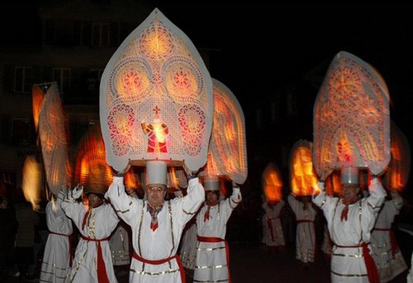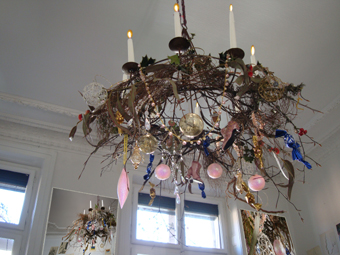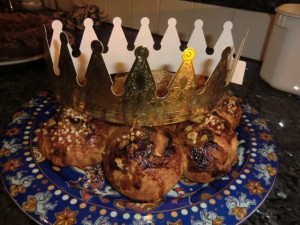It looks like you're using an Ad Blocker.
Please white-list or disable AboveTopSecret.com in your ad-blocking tool.
Thank you.
Some features of ATS will be disabled while you continue to use an ad-blocker.
13
share:
It is Sunday morning where I live, Sunday the 4th Advent before Christmas.
I put these explanations and stories of Christmas together for all of you on ATS while listening to all the songs appearing on the Mood-Music Thread - I have fun - thank you
Please enjoy and disregard my English. Also I'm unsure about the seize of some pics.
Christmas now and then
Most of todays Christmas celebrations and customs are based on German, Austrian and Swiss traditions from where they spread all over the world and eventually reached America via German and Dutch migrants.

german.about.com...
This does not mean that these countries hold the only true versions of meaning and celebrations of Christmas. Eastern Europe’s traditions might even be of more original source and practice as we shall see. And other countries have just as gorgeous and unique differences, e.g. St. Lucia's Day in Sveden.

December 13th was also the Winter Solstice, the shortest day of the year, in the ‘old Julian Calendar and was originally a pagan festival of lights
Confusion around the changing of various dates on which various celebrations are held are as perplexing and obscure as there origin.
I would like to present to you important key dates practiced during Christmas Time, their meaning or the practice involved, look at some customs and question their pagan roots such as Saturalia, paint a picture of traditional Christmas events from Switzerland, tell you about the beauty of Advent, Christmas Night, the Christmas Tree and other symbols. I would like to investigate a touch on the changes that surround Epiphany and the story of the 3 Kings including the much controversial xmas presents.
Martinstag nowadays is seemingly an old-fashioned custom (I guess it is replaced with the annual taxation declaration at the end of the financial year) and is only remembered for all the 11.11. practices. it used to be the day when the feudal lords would send their taxmen around their country to collect their due and then have a good season feasting on turkeys and such celeb stuff.
Advent

Christmas Time truly starts with Advent, the most beautiful one month celebrations that lead up to ‘Christmas’ as the highlight. The Christmas Wrath is the centre piece of the celebrations followed by the custom of the Advent-Calendar that starts on 1st of Dec. and is a countdown to Christ’s birth, Christmas, 24th December.
There are 4 Advent Sundays that are meticulously calculated, the first Advent is on the Sunday closest to Nov. 26th. There are usually 4 Sundays before Christmas but sometimes the 4th Sunday is Christmas.
Advent Dates for 2011
• November 27 - First Sunday of Advent, Green Advent
• December 4 - Second Sunday of Advent, Copper Advent
• December 11 - Third Sunday of Advent , Silver Advent
• December 18 - Fourth Sunday of Advent, Golden Advent
Each Advent Sunday has its name. So the first one is called ‘Green Sunday’. Either the kids already have made the Christmas Wrath by this day, or the family sits together and makes one out of evergreen pine twigs, ribbons and 4 candles.

The Christmas Wrath is an other very old tradition with obvious roots in old customs as the pagans of pre-Christian times would have held.
‘Green’ is here the link and refers to the symbol of eternal cycles of the seasons and fertility. Green stands for the land, red ribbons for life and gold for light and sun. The colours of the candles also have their specific significance.
Early wraths in history were then hung on house doors to protect from bad spirits.
catholicism.about.com...
There are ceremonies how to make a wrath, the blessing of a wrath and then how to light a wrath. However the common practice for the family is to light a candle, one more every Sunday, to reflect on the meaning of Christmas, maybe reading relevant texts from the bible, sing carols, think of the poor and needy, write xmas cards and start on presents, preparations and decorations, generally choreograph the symphony of Christmas Time and the celebrations.
If you still need to send some greetings, here is a link to some xmassy ecards
www.myfuncards.com...
Advent actually is also the beginning of the Church Year. The word ‘advent’ means an arrival or coming, especially one which is awaited.
The above and the following link will take you indepth into the higher knowledge of Advent practices.
www.crivoice.org...
more to come but i don't know yet how to add to it
I put these explanations and stories of Christmas together for all of you on ATS while listening to all the songs appearing on the Mood-Music Thread - I have fun - thank you
Please enjoy and disregard my English. Also I'm unsure about the seize of some pics.
Christmas now and then
Most of todays Christmas celebrations and customs are based on German, Austrian and Swiss traditions from where they spread all over the world and eventually reached America via German and Dutch migrants.

Most of the Anglo-American Christmas traditions have been borrowed and adapted from Austria and Germany.
german.about.com...
This does not mean that these countries hold the only true versions of meaning and celebrations of Christmas. Eastern Europe’s traditions might even be of more original source and practice as we shall see. And other countries have just as gorgeous and unique differences, e.g. St. Lucia's Day in Sveden.

December 13th was also the Winter Solstice, the shortest day of the year, in the ‘old Julian Calendar and was originally a pagan festival of lights
Confusion around the changing of various dates on which various celebrations are held are as perplexing and obscure as there origin.
I would like to present to you important key dates practiced during Christmas Time, their meaning or the practice involved, look at some customs and question their pagan roots such as Saturalia, paint a picture of traditional Christmas events from Switzerland, tell you about the beauty of Advent, Christmas Night, the Christmas Tree and other symbols. I would like to investigate a touch on the changes that surround Epiphany and the story of the 3 Kings including the much controversial xmas presents.
In the German-speaking countries, Christmas (Weihnachten) lasts approximately from December 1 to January 6. However, in some parts of German Europe the Christmas season begins as early as Martinstag on the 11th of November! The date of Christmas has fluctuated over the centuries. At one point January 6 was the date of the celebration, and that is still the date for some eastern Orthodox churches.
11. November - For many Germans and Austrians, St. Martin's Day (Martinstag) is the unofficial start of the Christmas season. Just as the late-November Thanksgiving holiday signals the start of the Christmas season in the US, Martinstag on November 11 tells Germans that Christmas is on the way.
Martinstag nowadays is seemingly an old-fashioned custom (I guess it is replaced with the annual taxation declaration at the end of the financial year) and is only remembered for all the 11.11. practices. it used to be the day when the feudal lords would send their taxmen around their country to collect their due and then have a good season feasting on turkeys and such celeb stuff.
Advent

Christmas Time truly starts with Advent, the most beautiful one month celebrations that lead up to ‘Christmas’ as the highlight. The Christmas Wrath is the centre piece of the celebrations followed by the custom of the Advent-Calendar that starts on 1st of Dec. and is a countdown to Christ’s birth, Christmas, 24th December.
There are 4 Advent Sundays that are meticulously calculated, the first Advent is on the Sunday closest to Nov. 26th. There are usually 4 Sundays before Christmas but sometimes the 4th Sunday is Christmas.
Advent Dates for 2011
• November 27 - First Sunday of Advent, Green Advent
• December 4 - Second Sunday of Advent, Copper Advent
• December 11 - Third Sunday of Advent , Silver Advent
• December 18 - Fourth Sunday of Advent, Golden Advent
Each Advent Sunday has its name. So the first one is called ‘Green Sunday’. Either the kids already have made the Christmas Wrath by this day, or the family sits together and makes one out of evergreen pine twigs, ribbons and 4 candles.

The Christmas Wrath is an other very old tradition with obvious roots in old customs as the pagans of pre-Christian times would have held.
While the Advent wreath is a feature in many Catholic homes and even Catholic churches during the season of Advent, it actually originated among the Lutherans of Eastern Germany in the 16th century. It was quickly adopted by both Protestants and Catholics throughout Germany, and it was brought to the United States by German immigrants in the 19th century. The Advent wreath has deeper origins as well, extending back to pre-Christian customs of burning lights during the darkest months of winter. Medieval Christians retained the custom while seeing such lights as a symbol of Christ.
‘Green’ is here the link and refers to the symbol of eternal cycles of the seasons and fertility. Green stands for the land, red ribbons for life and gold for light and sun. The colours of the candles also have their specific significance.
Early wraths in history were then hung on house doors to protect from bad spirits.
It wasn’t until 1838 that these wreaths made a comeback. A protestant pastor from Hamburg, Johann Wichern, who ran an orphanage, decided to place a giant wooden ring in a room to use it as a type of countdown to Christmas for the children. Each day during the advent, the pastor would light a candle after their daily Bible reading. It wasn’t long before this tradition took hold in other orphanages. The wooden wreath became each time more festively decorated. Yet it wasn’t till the 1860s in Berlin, where the wooden wreath was replaced by an evergreen wreath with only four candles to represent each Adventssonntag. The wreath was therefore smaller and quickly spread throughout German homes. By WWI, the advent wreath was present in almost all German protestant homes. Bit by bit the catholic Germans took up the traditions as well.
catholicism.about.com...
There are ceremonies how to make a wrath, the blessing of a wrath and then how to light a wrath. However the common practice for the family is to light a candle, one more every Sunday, to reflect on the meaning of Christmas, maybe reading relevant texts from the bible, sing carols, think of the poor and needy, write xmas cards and start on presents, preparations and decorations, generally choreograph the symphony of Christmas Time and the celebrations.
If you still need to send some greetings, here is a link to some xmassy ecards
www.myfuncards.com...
Advent actually is also the beginning of the Church Year. The word ‘advent’ means an arrival or coming, especially one which is awaited.
The above and the following link will take you indepth into the higher knowledge of Advent practices.
www.crivoice.org...
more to come but i don't know yet how to add to it
edit on 17-12-2011 by bestintentions because: (no reason given)
To tell you about the practice on Dec.6th as I know ‘Samichlaus’ and ‘Schmutzli’ (St Nicholas and the dark assistant whos name is derived from
dirt, because he is dirty and mean), I have to inaugurate you to mysterious Switzerland where a lot of pagan rituals are actually still quite
alive.
Samichlaus (St.Nicholaus) was and is still used as heavy educational tool. The parents ring up the person to be Samichlaus and tell him everything that their child has done good and also what it did not do good during the year.
When all kids are gathered and the young ones shake slightly in awe, Samichlaus appears with Schmutzli. Samichlaus bangs on the floor with his bishop’s staff and Schmutzli rattles with chains to frighten the kids even more. Then Samichlaus sits on his famous chair and opens his big all-knowing book. He calls the first child close and starts to read. First he reads all the good deeds.
If the child was good, at this stage it gets to recite a poem for Samichlaus who then rewards the child with a bag of nuts, mandarins and a toy.
But if the child was naughty he looks at the child with angry eyes and demands that the child will perform better at (what ever the parents want the child to improve at) and while he raises his deep voice Schmutzli starts to dance eagerly, rattles his chains and shows the bag he would pack the child into, if the child happened to be that bad, that it needs an extraordinary lesson.

In that case Schmutzli packs the (usually screaming) kid into the sack, throughs him onto his ‘Leiterwaegeli’ (handy little wooden cart that conveniently holds one or two kid’s bodies). He then takes off with the poor little soul to dispose of it in the dark forest - sometimes not before trashing the bag with his ‘Ruete’ (a bundle of sharp twigs).
This hopefully repels the child from being bold during the year and some parents still remind their offspring all through the year: be good or I tell the Samichlaus !
Even during processions in city streets this habit is still practiced and you can see the odd occasion when the Schmutzli claims a certain person, kidnaps him, trashes him and lets him go at some other obscure place. I’m not sure how frequently this is still done, but I remember seeing it during my childhood.
Another stunning custom called ‘Chlaus jage’ (Klausjagen, Santa chasing) is practiced in the Swiss town of Kuesnacht.
The origine of this custom refers back to the fact that the old Germanen and Alemanen worshiped the god Wotan. And anybody in those times knew that bad spirits and demons feared one thing: noise, namely paganistic noise (‘heidenlaerm’).
Young followers of Wotan set out during the winter solstice to blow horns, beat drums and bells and to yell what their lungs could give so that winter may get lost and to be speedily replaced by summer’s rich harvest.
This pagan nonsense would have been long forgotten but for the fact that the bishop of Mira received a participating part in the process of converting pagans to christianity.
The procession now is made up of 1500 participants some wearing kind of illuminated mitras in the dark and others being responsible for the ‘kravall’ (noise).

www.klausjagen.ch...
en.wikipedia.org...
This video will show you what it takes to chase bad spirits away.
The Christmas Tree
 Good to see an other variety of activities between the walls of NY
Good to see an other variety of activities between the walls of NY
While the season is growing and Christmas gains in momentum - the first snow might have fallen and the sweet fragrance of xmas cookies might be floating on the air - it is time to organize the Christmas Tree !
There is much debunkle about connections of Christmas Trees to pagan varieties of ritual trees.
 Tree in Hungry with ornaments that are crocheted
Tree in Hungry with ornaments that are crocheted
The Christmas tree was getting popular with the spread of Christianity. Whether there is a connection to other trees of life might not be a proven fact but that is not to say that there are no connections to it. Evergreen trees were always a symbol of everlasting life and fertility and suited well to celebrate Christ’s birth. That is why we decorate pine trees but put palms around the manger.
‚Adam und Eva’ already known to ancient Sumerians of course still have their Names Day on Dec. 24th on the Namesday Calendar.
Orthodox calendar of saints
 Busan Korea, girl dismantling tree in February!!
Busan Korea, girl dismantling tree in February!!
Samichlaus (St.Nicholaus) was and is still used as heavy educational tool. The parents ring up the person to be Samichlaus and tell him everything that their child has done good and also what it did not do good during the year.
When all kids are gathered and the young ones shake slightly in awe, Samichlaus appears with Schmutzli. Samichlaus bangs on the floor with his bishop’s staff and Schmutzli rattles with chains to frighten the kids even more. Then Samichlaus sits on his famous chair and opens his big all-knowing book. He calls the first child close and starts to read. First he reads all the good deeds.
If the child was good, at this stage it gets to recite a poem for Samichlaus who then rewards the child with a bag of nuts, mandarins and a toy.
But if the child was naughty he looks at the child with angry eyes and demands that the child will perform better at (what ever the parents want the child to improve at) and while he raises his deep voice Schmutzli starts to dance eagerly, rattles his chains and shows the bag he would pack the child into, if the child happened to be that bad, that it needs an extraordinary lesson.

In that case Schmutzli packs the (usually screaming) kid into the sack, throughs him onto his ‘Leiterwaegeli’ (handy little wooden cart that conveniently holds one or two kid’s bodies). He then takes off with the poor little soul to dispose of it in the dark forest - sometimes not before trashing the bag with his ‘Ruete’ (a bundle of sharp twigs).
This hopefully repels the child from being bold during the year and some parents still remind their offspring all through the year: be good or I tell the Samichlaus !
Even during processions in city streets this habit is still practiced and you can see the odd occasion when the Schmutzli claims a certain person, kidnaps him, trashes him and lets him go at some other obscure place. I’m not sure how frequently this is still done, but I remember seeing it during my childhood.
Another stunning custom called ‘Chlaus jage’ (Klausjagen, Santa chasing) is practiced in the Swiss town of Kuesnacht.
The origine of this custom refers back to the fact that the old Germanen and Alemanen worshiped the god Wotan. And anybody in those times knew that bad spirits and demons feared one thing: noise, namely paganistic noise (‘heidenlaerm’).
Young followers of Wotan set out during the winter solstice to blow horns, beat drums and bells and to yell what their lungs could give so that winter may get lost and to be speedily replaced by summer’s rich harvest.
This pagan nonsense would have been long forgotten but for the fact that the bishop of Mira received a participating part in the process of converting pagans to christianity.
The procession now is made up of 1500 participants some wearing kind of illuminated mitras in the dark and others being responsible for the ‘kravall’ (noise).

www.klausjagen.ch...
en.wikipedia.org...
This video will show you what it takes to chase bad spirits away.
The Christmas Tree

While the season is growing and Christmas gains in momentum - the first snow might have fallen and the sweet fragrance of xmas cookies might be floating on the air - it is time to organize the Christmas Tree !
There is much debunkle about connections of Christmas Trees to pagan varieties of ritual trees.

The Christmas tree was getting popular with the spread of Christianity. Whether there is a connection to other trees of life might not be a proven fact but that is not to say that there are no connections to it. Evergreen trees were always a symbol of everlasting life and fertility and suited well to celebrate Christ’s birth. That is why we decorate pine trees but put palms around the manger.
Similar to the decoration of the Christmas tree we can find customs of decorating whole trees in medieval times such as the ‘Maibaum’ and the ‘Richtbaum’, all with strong shamanic references. And the church had the habit of decorating a tree of knowledge on Dec 24th to commemorate Adam and Eve and the ‘Paradiesspiel’ the play of paradise.
‚Adam und Eva’ already known to ancient Sumerians of course still have their Names Day on Dec. 24th on the Namesday Calendar.
Orthodox calendar of saints

Thank you for a very well researched and timely post.
Star and flag for you!
That was very interesting....:-)
Star and flag for you!
That was very interesting....:-)
Weihnachten, Christmas
24th December

Weihnachten or Holy Evening, a pure family affair, literaly means ‚night of consecration’ or ‚dedication’ or ‚blessing’. So from the word itself it is obvious that originally the eve of 24th Dec was ‚Christmas’. The night ‚Kristkindchen’ would come.
This used to confuse me as a child. How can a Christ Child bring these things ?? What is a Christ Child anyway? An angel they told me. What a nonsense I used to think. Little did we kids know about the significance of that ‚baby’ in Jerusalem. Of course we knew the story, but nothing about the politics and all these religious inventions, adaptations, reforms and conspiracies.
During Christmas Eve those things are truly of little consequence. The main thing is the celebration itself. And at that my family was good at, our ceremony was based on the old eastern European style of effluence and chick.
We kids had to be ready, bathed, combed, dressed and of best behavior. We had to wait until Kristkindchen (little christ child) had arrived and gone - it used to ring a bell as it departed - then we were alowed into the livingroom that this ‚weird angel’ had transformed with a magnificent tree reaching the ceiling full with silver and gold, szaloncukor and lit candles and sparkles. Presents everywhere. Our father with his eager heart would crouch infront of the tree with the camera, ready to capture every sigh of oh and ah emanating from us kids as we entered through the door, in order of age, and last our outragesly elegant mother.
after plenty of time investigating the gifts, kissing each other and being the object for father’s camera, mother would call to the table (I mean give orders [to me as the oldest] to set the table and to sit down, eat and behave again) after which we then would go to ‚Midnight Mass’.
 My sister managed a combination of Christmas Wrath and Tree
My sister managed a combination of Christmas Wrath and Tree
Now lets turn over a page and proceed to December 25th, the day most of you would celebrate Christmas - a mind boggling event !
Not only does the Christmas Tree have its notorious past - all of Christmas Celebration seems to be based on a bizzar Roman custom ! Saturalia.
25th December

Lets start with looking into the question : why the 25th or rather : when was Jesus really born ?
24th December

24. Dezember - Heiligabend, Christmas Eve is the most important time of the Germanic celebration. No waiting for Santa Claus to come down the chimney. The presents (from the Christkindl, Christ Child) are opened under the tree that night
Weihnachten or Holy Evening, a pure family affair, literaly means ‚night of consecration’ or ‚dedication’ or ‚blessing’. So from the word itself it is obvious that originally the eve of 24th Dec was ‚Christmas’. The night ‚Kristkindchen’ would come.
This used to confuse me as a child. How can a Christ Child bring these things ?? What is a Christ Child anyway? An angel they told me. What a nonsense I used to think. Little did we kids know about the significance of that ‚baby’ in Jerusalem. Of course we knew the story, but nothing about the politics and all these religious inventions, adaptations, reforms and conspiracies.
During Christmas Eve those things are truly of little consequence. The main thing is the celebration itself. And at that my family was good at, our ceremony was based on the old eastern European style of effluence and chick.
We kids had to be ready, bathed, combed, dressed and of best behavior. We had to wait until Kristkindchen (little christ child) had arrived and gone - it used to ring a bell as it departed - then we were alowed into the livingroom that this ‚weird angel’ had transformed with a magnificent tree reaching the ceiling full with silver and gold, szaloncukor and lit candles and sparkles. Presents everywhere. Our father with his eager heart would crouch infront of the tree with the camera, ready to capture every sigh of oh and ah emanating from us kids as we entered through the door, in order of age, and last our outragesly elegant mother.
after plenty of time investigating the gifts, kissing each other and being the object for father’s camera, mother would call to the table (I mean give orders [to me as the oldest] to set the table and to sit down, eat and behave again) after which we then would go to ‚Midnight Mass’.

Now lets turn over a page and proceed to December 25th, the day most of you would celebrate Christmas - a mind boggling event !
Not only does the Christmas Tree have its notorious past - all of Christmas Celebration seems to be based on a bizzar Roman custom ! Saturalia.
25th December

Lets start with looking into the question : why the 25th or rather : when was Jesus really born ?
A. Popular myth puts his birth on December 25th in the year 1 C.E.
B. The New Testament gives no date or year for Jesus’ birth. The earliest gospel – St. Mark’s, written about 65 CE – begins with the baptism of an adult Jesus. This suggests that the earliest Christians lacked interest in or knowledge of Jesus’ birthdate.
C. The year of Jesus birth was determined by Dionysius Exiguus, a Scythian monk, “abbot of a Roman monastery. His calculation went as follows:
a. In the Roman, pre-Christian era, years were counted from ab urbe condita (“the founding of the City” [Rome]). Thus 1 AUC signifies the year Rome was founded, 5 AUC signifies the 5th year of Rome’s reign, etc.
b. Dionysius received a tradition that the Roman emperor Augustus reigned 43 years, and was followed by the emperor Tiberius.
c. Luke 3:1,23 indicates that when Jesus turned 30 years old, it was the 15th year of Tiberius reign.
d. If Jesus was 30 years old in Tiberius’ reign, then he lived 15 years under Augustus (placing Jesus birth in Augustus’ 28th year of reign).
e. Augustus took power in 727 AUC. Therefore, Dionysius put Jesus birth in 754 AUC.
f. However, Luke 1:5 places Jesus’ birth in the days of Herod, and Herod died in 750 AUC – four years before the year in which Dionysius places Jesus birth.
and why the 25th ?
You have to read this article to really be in the picture
www.simpletoremember.com...
Then, shortly after beautiful heartfelt Xmas is over and the gifts are just about worn out, we start with an other paganistic behaviour : we celebrate New Year which in Europe we call ‚Sylvester’.
Sylvester

We not actually celebrate New Year. We celebrate the night of the last year until midnight and some of us then crash and collaps.
We shall not talk about why some collaps nor how spectacular the first day of the New Year looks from that angle.
How ever you might have come through the festive season, some will find back to the routine of every day. Start work again with still unsteady hands. because of the mess left in the living room many have already cleaned out all signs of xmas others anticipate doing so on Jan. 6th which is 3 Kings day.
Then all is over and done for a year. The end of the 12 days of Christmas. Right ?
While xmas celebrations of either the 24th or the 25th are obscured with a thick fog of commercialism ‘real Christmas’ only just begins here !!
Jan. 6th is for true christians the most sacred of all days of Christ’s birth. Epiphany.
A. Roman pagans first introduced the holiday of Saturnalia, a week long period of lawlessness celebrated between December 17-25. During this period, Roman courts were closed, and Roman law dictated that no one could be punished for damaging property or injuring people during the weeklong celebration. The festival began when Roman authorities chose “an enemy of the Roman people” to represent the “Lord of Misrule.” Each Roman community selected a victim whom they forced to indulge in food and other physical pleasures throughout the week. At the festival’s conclusion, December 25th, Roman authorities believed they were destroying the forces of darkness by brutally murdering this innocent man or woman.
B. The ancient Greek writer poet and historian Lucian (in his dialogue entitled Saturnalia) describes the festival’s observance in his time. In addition to human sacrifice, he mentions these customs: widespread intoxication; going from house to house while singing naked; rape and other sexual license; and consuming human-shaped biscuits (still produced in some English and most German bakeries during the Christmas season).
C. In the 4th century CE, Christianity imported the Saturnalia festival hoping to take the pagan masses in with it. Christian leaders succeeded in converting to Christianity large numbers of pagans by promising them that they could continue to celebrate the Saturnalia as Christians.[2]
D. The problem was that there was nothing intrinsically Christian about Saturnalia. To remedy this, these Christian leaders named Saturnalia’s concluding day, December 25th, to be Jesus’ birthday.
E. Christians had little success, however, refining the practices of Saturnalia. As Stephen Nissenbaum, professor history at the University of Massachussetts, Amherst, writes, “In return for ensuring massive observance of the anniversary of the Savior’s birth by assigning it to this resonant date, the Church for its part tacitly agreed to allow the holiday to be celebrated more or less the way it had always been.” The earliest Christmas holidays were celebrated by drinking, sexual indulgence, singing naked in the streets (a precursor of modern caroling), etc.
You have to read this article to really be in the picture
www.simpletoremember.com...
Then, shortly after beautiful heartfelt Xmas is over and the gifts are just about worn out, we start with an other paganistic behaviour : we celebrate New Year which in Europe we call ‚Sylvester’.
Sylvester

We not actually celebrate New Year. We celebrate the night of the last year until midnight and some of us then crash and collaps.
We shall not talk about why some collaps nor how spectacular the first day of the New Year looks from that angle.
How ever you might have come through the festive season, some will find back to the routine of every day. Start work again with still unsteady hands. because of the mess left in the living room many have already cleaned out all signs of xmas others anticipate doing so on Jan. 6th which is 3 Kings day.
Then all is over and done for a year. The end of the 12 days of Christmas. Right ?
While xmas celebrations of either the 24th or the 25th are obscured with a thick fog of commercialism ‘real Christmas’ only just begins here !!
Jan. 6th is for true christians the most sacred of all days of Christ’s birth. Epiphany.
5. Januar - "Twelfth Night" - the last of the twelve nights or days of Christmas. "On the twelfth day of Christmas my true love gave to me..." 6. Januar - Epiphany is known as "Three Kings Day" or Heilige Drei Könige in German. It commemorates the arrival of the Three Wise Men (three kings) in Bethlehem. This is the end of the Christmas season in Europe. The last of the Christmas trees go in the trash and the "twelve days of Christmas" come to an end.
January 6th
Epiphany
With Epiphany we celebrate the Revelation of God to man.
It is a solemn celebration.
The Prayer for the Feast of the Epiphany of Our Lord Jesus Christ (from the Mass of St. Pius V):
there are 4 reveleations that are important at this the holy Christ Child’s Birth:
• The Baptism of Christ; the Holy Spirit descends and the voice of God the Father is heard, declaring, that Jesus is His Son
• Christ’s first miracle; the changing of water into wine at the wedding in Cana that reveals that Christ is divine
• The Nativity of Christ; the angels bear witness to Christ as do the shepherds, representing the people of Israel
• The visitation of the Wise Men or Magi; symbolic for Christ’s divinity revealed to the Gentiles, the other nations of the earth
While in East Europe and within the Orthodox Church Christmas is celebrated on this day, in the West Epiphany marks the end of Christmas time, the end of the 12 Days of Christmas.
But not all the West is merely engaged with the disposal of xmas. Some do celebrate a special ritual on this day :
3 Kings Day

catholicism.about.com...
german.about.com...
Again, the practice of 3 Kings Day would vary in many a Germanic tradition, and I shall tell you how today it is done in Switzerland :
They go to the bakery, ya, only a very few would still bake the 3-Kings-Cake themselves. The trick about this cake is, that it is divided into segments and only one slice has a little plastic king baked into it. On top of the cake is one golden crown.

Usually at either Morning Tea or Afternoon Tea this cake is then shared either by friends, work colleges or family members.
You can guess the rest. The one person who finds this symbol in their slice is a king for the rest of the day and can command the others to do everything for them.
blogs.angloinfo.com...
A last a short word on
Christmas Presents

While ‘The Romans’ of course could not keep things civil
the presentation of gifts can be looked at from the point of view of the 3 Magis Gaspar, Melchior, and Balthasar who had followed a STAR to Bethlehem to honoured the New Born with Sage, Incense and Myrrh (for a healthy and long life) and remember that with every present we give each other we honour The Sacred within each of us.

Epiphany
Like many of the most ancient Christian feasts, Epiphany was first celebrated in the East, where it has been held from the beginning almost universally on January 6. Today, among both Eastern Catholics and Eastern Orthodox, the feast is known as Theophany—the revelation of God to man. In most countries and dioceses, the celebration is transferred to the Sunday between January 2 and January 8, inclusive.
With Epiphany we celebrate the Revelation of God to man.
It is a solemn celebration.
The Prayer for the Feast of the Epiphany of Our Lord Jesus Christ (from the Mass of St. Pius V):
O God, Who by the guidance of a star didst this day reveal Thine only-begotten Son to the Gentiles, mercifully grant that we, who know Thee now by faith, may be so led as to behold with our eyes the beauty of Thy majesty. Through the same Lord Jesus Christ, Thy Son, Who liveth and reigneth with Thee in the unity of the Holy Ghost, God, world without end. Amen.
there are 4 reveleations that are important at this the holy Christ Child’s Birth:
• The Baptism of Christ; the Holy Spirit descends and the voice of God the Father is heard, declaring, that Jesus is His Son
• Christ’s first miracle; the changing of water into wine at the wedding in Cana that reveals that Christ is divine
• The Nativity of Christ; the angels bear witness to Christ as do the shepherds, representing the people of Israel
• The visitation of the Wise Men or Magi; symbolic for Christ’s divinity revealed to the Gentiles, the other nations of the earth
While in East Europe and within the Orthodox Church Christmas is celebrated on this day, in the West Epiphany marks the end of Christmas time, the end of the 12 Days of Christmas.
But not all the West is merely engaged with the disposal of xmas. Some do celebrate a special ritual on this day :
3 Kings Day

Until the Roman church adopted December 25 in the 4th century, January 6 was the day of celebration-today's Epiphany or Heilige Drei Könige (the "Wise Men," "Three Kings," the Magi) in German. To this day, the initials of the Three Kings-C+M+B (Caspar/Gaspar, Melchior, and Balthasar)-plus the year are inscribed in chalk over doorways in German-speaking countries on the eve of January 6 to protect house and home. In many parts of Europe, including Austria, Germany, and Switzerland, the Christmas celebration does not end until this date, now considered the arrival of the three "kings of the orient" in Bethlehem-and the end of the "twelve days of Christmas" between Christmas and January 6."
catholicism.about.com...
german.about.com...
Again, the practice of 3 Kings Day would vary in many a Germanic tradition, and I shall tell you how today it is done in Switzerland :
They go to the bakery, ya, only a very few would still bake the 3-Kings-Cake themselves. The trick about this cake is, that it is divided into segments and only one slice has a little plastic king baked into it. On top of the cake is one golden crown.

Usually at either Morning Tea or Afternoon Tea this cake is then shared either by friends, work colleges or family members.
You can guess the rest. The one person who finds this symbol in their slice is a king for the rest of the day and can command the others to do everything for them.
blogs.angloinfo.com...
A last a short word on
Christmas Presents

While ‘The Romans’ of course could not keep things civil
The Origin of Christmas Presents In pre-Christian Rome, the emperors compelled their most despised citizens to bring offerings and gifts during the Saturnalia (in December) and Kalends (in January). Later, this ritual expanded to include gift-giving among the general populace. The Catholic Church gave this custom a Christian flavor by re-rooting it in the supposed gift-giving of Saint Nicholas
the presentation of gifts can be looked at from the point of view of the 3 Magis Gaspar, Melchior, and Balthasar who had followed a STAR to Bethlehem to honoured the New Born with Sage, Incense and Myrrh (for a healthy and long life) and remember that with every present we give each other we honour The Sacred within each of us.

Thank for such a thoughtful thread, living such reclusive existence, I have not realized how much I have mist Christmas and friends to share such joy
and a time of good will, as it tends to pass one by with all the humdrum of life and dealing with it
Thank you for shearing your Christmas with me
bulla joiner of dots
Thank you for shearing your Christmas with me
bulla joiner of dots
SnF for you best. This is the type of quality thread we need to see more of here on ATS.
Very informative, well thought out, pictures, and links.
Thanks for sharing, and keep the quality coming.
Very informative, well thought out, pictures, and links.
Thanks for sharing, and keep the quality coming.
Thank you everybody for stars, flags and applaus !
reply to post by tsawyer2
thank you. i'm glad you enjoyed.
it is a bit long, the article, and i do hope some more people would find the time to read it.
maybe some need some more time during the more quiet time over xmas
reply to post by tsawyer2
thank you. i'm glad you enjoyed.
it is a bit long, the article, and i do hope some more people would find the time to read it.
maybe some need some more time during the more quiet time over xmas
reply to post by bulla
and thank you for catching the spirit
I consider a reclusive existence a privilege to let all the humdrum pass by. I reckon a one-person fest to be of true power.
I work this christmas – but it’s o.k.
keep enjoying
and thank you for catching the spirit
I consider a reclusive existence a privilege to let all the humdrum pass by. I reckon a one-person fest to be of true power.
I work this christmas – but it’s o.k.
keep enjoying
reply to post by Druid42
we are sure of this ?
maybe.
ps
how was your winter solstice, druid ?
spooky enough ?
we are sure of this ?
maybe.
ps
how was your winter solstice, druid ?
spooky enough ?
new topics
-
DOJ Special Counsel Robert HUR Says JOE BIDEN Can Be ARRESTED After Jan 20th 2025.
Above Politics: 6 hours ago
top topics
-
More Proof of Lawfare
US Political Madness: 13 hours ago, 20 flags -
I thought Trump was the existential threat?
World War Three: 14 hours ago, 19 flags -
Joe Biden Dabs Away Tears at Farewell White House Dinner
Politicians & People: 15 hours ago, 9 flags -
Interesting Video-UFO?
Aliens and UFOs: 15 hours ago, 6 flags -
DOJ Special Counsel Robert HUR Says JOE BIDEN Can Be ARRESTED After Jan 20th 2025.
Above Politics: 6 hours ago, 6 flags
active topics
-
DOJ Special Counsel Robert HUR Says JOE BIDEN Can Be ARRESTED After Jan 20th 2025.
Above Politics • 8 • : bally001 -
Anyone like the Scorpions?
Music • 15 • : Cre8chaos79 -
Well, here we go red lines crossed Biden gives the go ahead to use long range missiles
World War Three • 365 • : annonentity -
The JAN 6th 2021 U.S. Capitol Unrest Charges Against Former President TRUMP Were Dropped Today.
US Political Madness • 15 • : WeMustCare -
President-Elect DONALD TRUMP's 2nd-Term Administration Takes Shape.
Political Ideology • 251 • : WeMustCare -
I thought Trump was the existential threat?
World War Three • 51 • : WeMustCare -
More Proof of Lawfare
US Political Madness • 30 • : WeMustCare -
Joe Biden Dabs Away Tears at Farewell White House Dinner
Politicians & People • 24 • : RickyD -
Encouraging News Media to be MAGA-PAF Should Be a Top Priority for Trump Admin 2025-2029.
Education and Media • 80 • : WeMustCare -
The Acronym Game .. Pt.4
General Chit Chat • 986 • : KnowItAllKnowNothin
13
